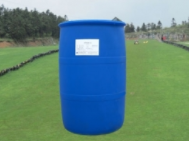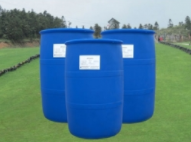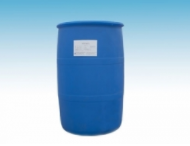Some surfactants with corrosion inhibition properties are commonly used in weak acidic and neutral solutions, especially in oily sewage where the metal corrosion resistance is usually based on lipophilic surfactants. Surfactants with corrosion inhibition can form adsorption film on metal surface. XPS energy spectrum analysis and electrochemical impedance spectroscopy of metal electrode surface in corrosion medium containing surfactants can prove that surfactants act as corrosion inhibitors through geometric coverage effect.

When surfactant adsorbs on metal surface, its hydrophilic group adsorbs on metal surface. Because of the different nature of hydrophilic group, it has physical or chemical adsorption with metal surface. The adsorption isotherms of different surfactants on metal surface follow different adsorption isotherms. When the concentration of surfactants is low, a single molecule adsorption layer is formed on the metal surface. The hydrophobic non-polar part forms a water repellent barrier covering the metal surface in aqueous solution. When the concentration is high, a bilayer adsorption film is formed on the metal surface due to the interaction of hydrophobic groups. The increase of surfactant concentration can improve its corrosion inhibition efficiency. When the concentration increases to saturated adsorption on the metal surface, the corrosion inhibition efficiency shows a good performance. For a series of surfactants, the corrosion inhibition efficiency reaches a high level near the critical micelle concentration cmc. A kind of

The effect of hydrophobic long alkyl chain on corrosion inhibition is complex. When the chain length is short and the alkyl number on heteroatoms is small, the corrosion inhibition of surfactants can be enhanced by the increase of carbon chain and alkyl group. This is because the adsorption of surfactants on metal surface is a coordination bond formed by heteroatoms providing solitary electrons to metal ions on metal surface. Alkyl is an electron repulsion group. The growth of carbon chain and alkyl can enhance the electron repulsion effect, increase the density of electron cloud on heteroatoms, and make the formed coordination bond more stable. It is helpful to improve the efficiency of corrosion inhibition. However, the solubility of surfactants with too long carbon chain decreases, so that the concentration of surfactants in corrosive medium can not reach the required concentration for saturated adsorption. Therefore, after reaching a certain chain length, the inhibition efficiency decreases by further increasing the number of carbon atoms. A kind of

Long chain amines are commonly used as corrosion inhibitors for metals in acidic media. For example, cetylpyridine chloride is a tertiary amine and can be used as zinc corrosion inhibitor in 0.5 mol/L hydrochloric acid solution.
Nonionic surfactant sorbitol fatty acid ester and polyoxyethylene derivative of sorbitol fatty acid ester can be used as corrosion inhibitor for steel in water system. Alkylphenol polyoxyethylene ether can be used as corrosion inhibitor for steel when it is combined with alkali metal borate and molybdate nitric acid. A mixture of nonylphenol polyoxyethylene ether and polyoxyethylene amine with cyclic quaternary ammonium salt and alkynyl alcohol can be used as metal corrosion inhibitor in oil field water injection wells.